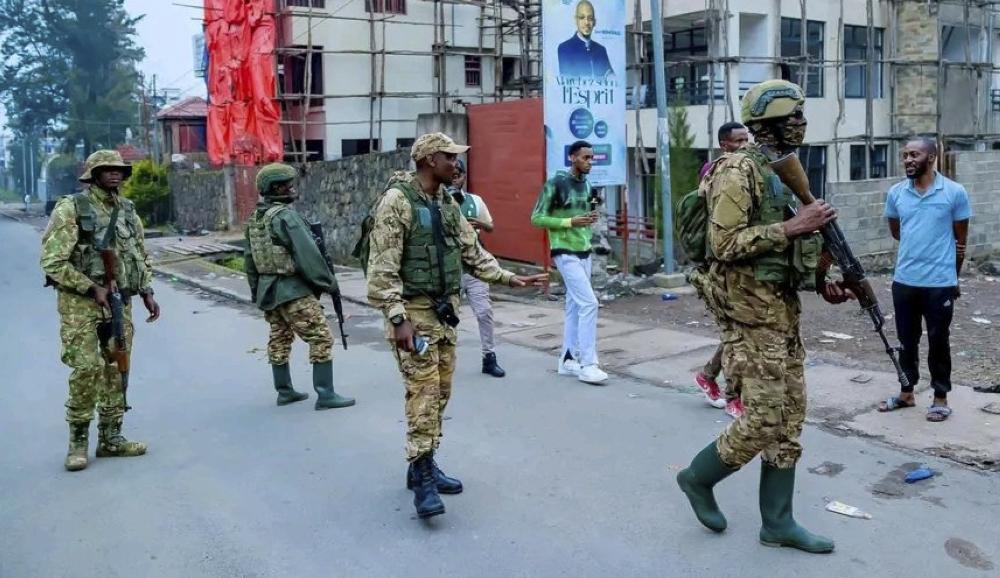Donnah Rubagumya
Africa-Press – Rwanda. The eastern Democratic Republic of Congo (DR Congo) has been a region in perpetual crisis way longer than our generation. Over 130 armed groups. Decades of violence. Millions displaced. Countless lives shattered.
The Congolese government in Kinshasa has tried everything. Peace talks. Military operations. International interventions. Yet, the chaos persisted. But what if the solution has been staring them in the face all along?
For decades, the Congolese government and international community have struggled to dismantle these militias. But what if the solution lies in an unlikely place? What if the M23 rebellion is actually a blessing in disguise?
Could this group be the catalyst to finally clean up the east? What if the M23 rebellion is actually the unlikely messiah the east needs? Could this group of young men and women, be the key to crushing militias, resettling refugees, and ushering in an era of prosperity?
Let’s face it. No mechanisms to disarm militias have worked. Peace talks? They often collapse. Military operations? They rarely achieve lasting results. The UN’s MONUSCO mission? It’s been criticised for being ineffective. Negotiations with banditry groups? They’re near impossible.
These militias and their masters (some of them big fish within the DR Congo government and worse of it foreign mafias) thrive on fragmentation. They exploit the region’s vast terrain and weak governance. So, what’s left? Kinshasa should keep dancing rumba with confidence, it seems M23 rebels have solved their decades long nightmare.
M23 is also one of the most organised and disciplined forces in the region. It has the military capacity to challenge and dismantle other militias.
And it has a vested interest in stabilizing the east. For Kinshasa, this should present an opportunity. A controversial one, yes. But also a potentially transformative one.
M23, with its military prowess, has systematically crushed other armed groups who unfortunately are fighting alongside government forces, FADRC. The FDLR (which is composed of remnants of militia that committed the 1994 Genocide against the Tutsi), Mai Mai, Nyatura, and the myriad of smaller militias. It’s not a far-fetched wish, we could see both Kivus (North and South) cleaned of bandits and militias completely.
Then look at a scenario in the east, long a haven for banditry, stabilising. Roads reopening. Trade resuming. Farmers returning to their fields. Miners working without fear. The economy is recovering. Is this a pipe dream? Perhaps. But it’s not entirely impossible.
Here’s why Kinshasa should start considering M23 as a partner in this vision. Once the Kivus fall within M23’s authority, that means, no militia will be operating in the region. The Eastern DR Congo will be clean and ready for peace.
If Kinshasa was looking at things strategically, I would pause the rumba , bin my ego and start preparing to invite M23 to the negotiation table. We know M23 is not after balkanization, they want their parents to return to their ancestral home and be able to live in peace. This, if I was Kinshasa, I would offer it in abundance, and autonomize it, if need be.
There are thousands of Tutsi refugees stranded in neighboring countries like Rwanda and Uganda. There are hundreds of thousands of internally displaced Congolese living in squalid camps. If the east stabilizes, these people can return home. They can rebuild their lives. Contribute to the economy.
This is not just about humanitarianism. It’s about prosperity. A stable, populous east means more workers. More consumers. More taxpayers. The economic potential is enormous.
Critics will argue that this approach rewards violence. That it legitimizes a group with a not so clean past. But let’s be realistic. The eastern DR Congo is already a war zone.
The priority should be ending the suffering of civilians. If engaging with M23 can achieve that, isn’t it worth considering? The alternative—endless cycles of violence—is far worse.
There’s also the question of regional dynamics. Rwanda’s alleged support for M23 complicates matters. But even here, there’s potential. If Rwanda sees M23 as a tool to secure its interests, why not channel that influence positively?
A coordinated effort involving Rwanda, the DR Congo, and international actors could turn M23 into a force for good. It’s a delicate balancing act. But diplomacy often is.
The benefits of this approach are clear. A stable east means security for millions. It means the return of refugees. It means economic growth.
It means a stronger, more unified DR Congo. For Kinshasa, this is an opportunity to rewrite the narrative. To show leadership. To bring lasting peace to a region that has known only war.
The eastern DR Congo needs bold, unconventional solutions. M23 might just be the bitter pill Kinshasa needs to swallow and a messiah in disguise. For the sake of millions, it’s time to consider the unthinkable.
Kinshasa should see M23 not as a threat, but as an opportunity. An opportunity to crush militias. To bring refugees home. To build a brighter future. The question is: Are they brave enough to try?
Source: The New Times
For More News And Analysis About Rwanda Follow Africa-Press






